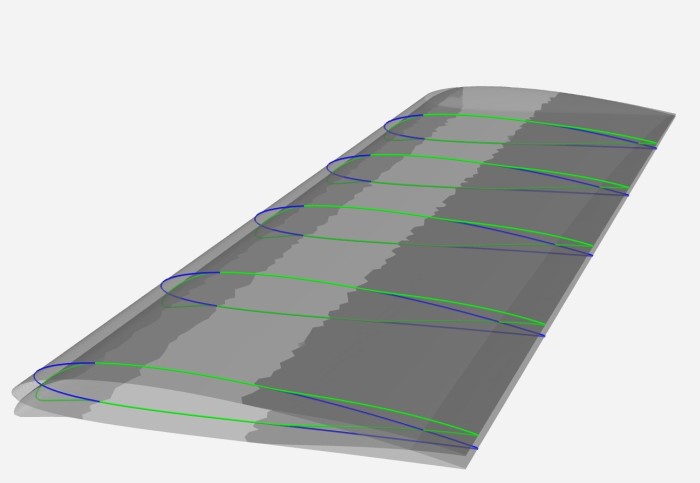Breakthrough morphing wings to advance aerodynamic flight
by Ayesha Khan

Imperial experts contribute to a new multidisciplinary strategy that will revolutionise aerodynamic flight with shape-morphing wings.
Aeronautics researchers, Professor Zahra Sharif Khodaei and Professor Ferri Aliabadi, at Imperial College London, have embarked on a collaborative research project that will focus on the optimal adaption of an aeroplane’s aerodynamic wing in response to real-time flight conditions.
The Building Actions in Smart Aviation with Environmental Gains (BAANG) project is a scientific strategy that connects research fields of aeronautics, mechatronics and additive technologies; spanning five areas – smart materials, novel structures, new design, simulation techniques and optimal wing shame adaption.
The team believe that the new method, of optimising aerodynamic shape to actual flight conditions, will increase aerodynamic success. Adapting of wings will be achieved through morphing the wing’s trailing edge or winglet shape, using an approach based on switching between predefined shapes, enabled by innovative metamaterials. The new morphing technique will not replace primary aircraft control such as the elevator, aileron and rudder, but rather consider the effects caused by wing shape change on aircraft control.
Such morphing allows for improved passenger comfort as well as lowering aerodynamic drag and structural weight. These changes result in decreased fuel consumption, which is coupled with economic benefits and reduced emissions.
This innovative approach promises to open new frontiers in the development of 3D printed structures, with potential applications ranging from aerospace to medicine.
“Morphing wings have been the subject of research for many years, however their adoption in civil aircrafts have been slow due to the risks related to their operation and predicting their health state. This is where the integration of structural health monitoring can influence the reliability of morphing structures.” - Professor Zahra Sharif Khodaei
By utilising advanced metamaterials, the team can create structures with unique sensing and actuating capabilities that boast unconventional shapes and properties. However, predicting the structural response and integrity of such designs can be challenging.
Application of structural health monitoring expertise, from Aeronautics Professors Zahra Sharif Khodaei and Ferri Aliabadi, will help to facilitate the adoption of these novel materials and shapes, by enabling less conservative design thus lower weight, without compromising safety.
However, the new technology is not without a unique set of challenges, including the effects of gradual shape change on aerodynamic properties, the need for well-managed 3D printing technologies for advanced metamaterial application and the design of appropriate morphing control.
The BAANG project’s innovate approach to aerodynamics is poised to revolutionise how aircraft fly. Linking four scientific disciplines will enable the team to increase excellence of research in the field and lead to evermore ground-breaking advancements in the future.
Research will be a collaborative effort between Imperial College London, Brno University of Technology, TU Delft and TU WIEN.
Article text (excluding photos or graphics) © Imperial College London.
Photos and graphics subject to third party copyright used with permission or © Imperial College London.
Reporter
Ayesha Khan
Department of Aeronautics